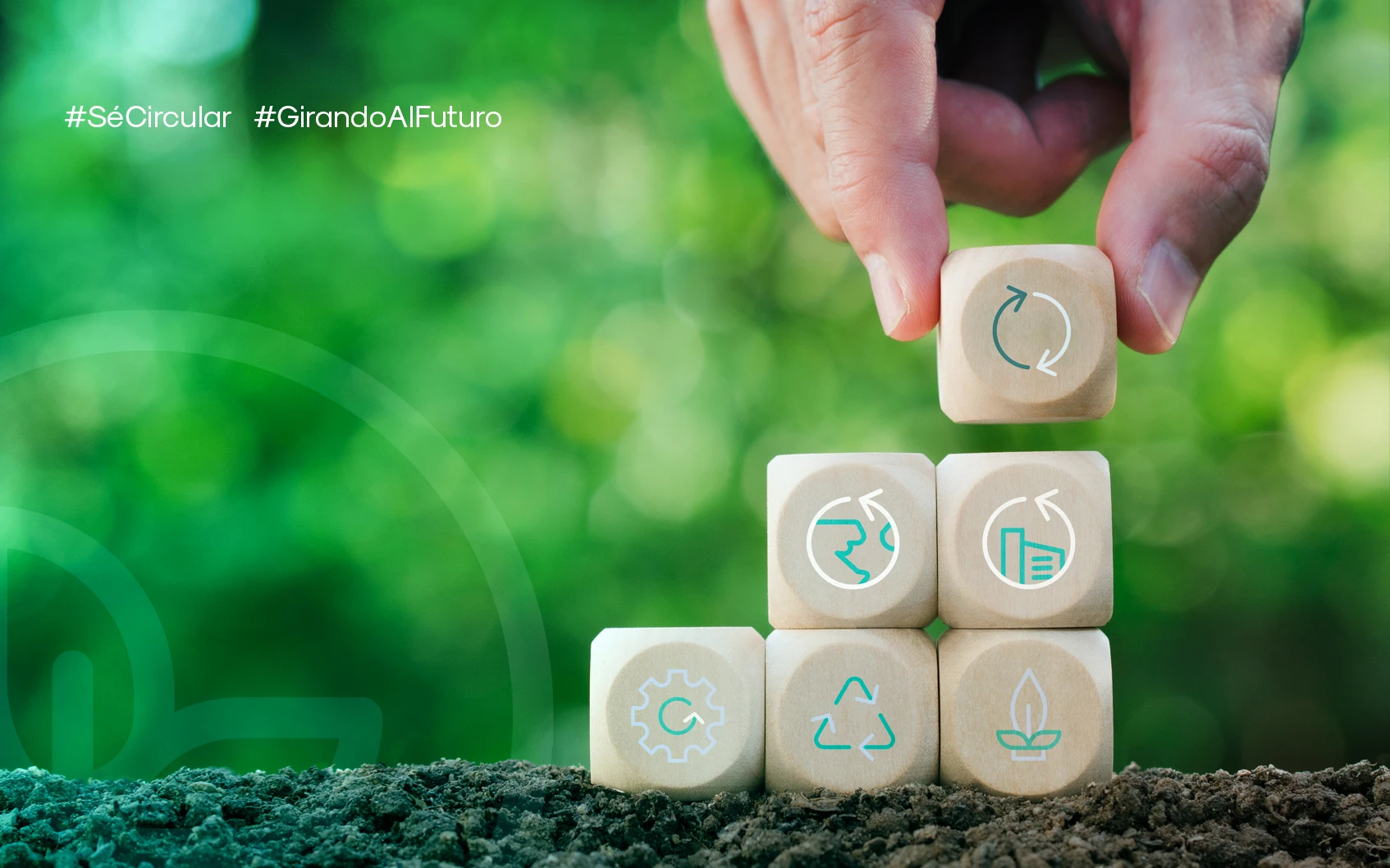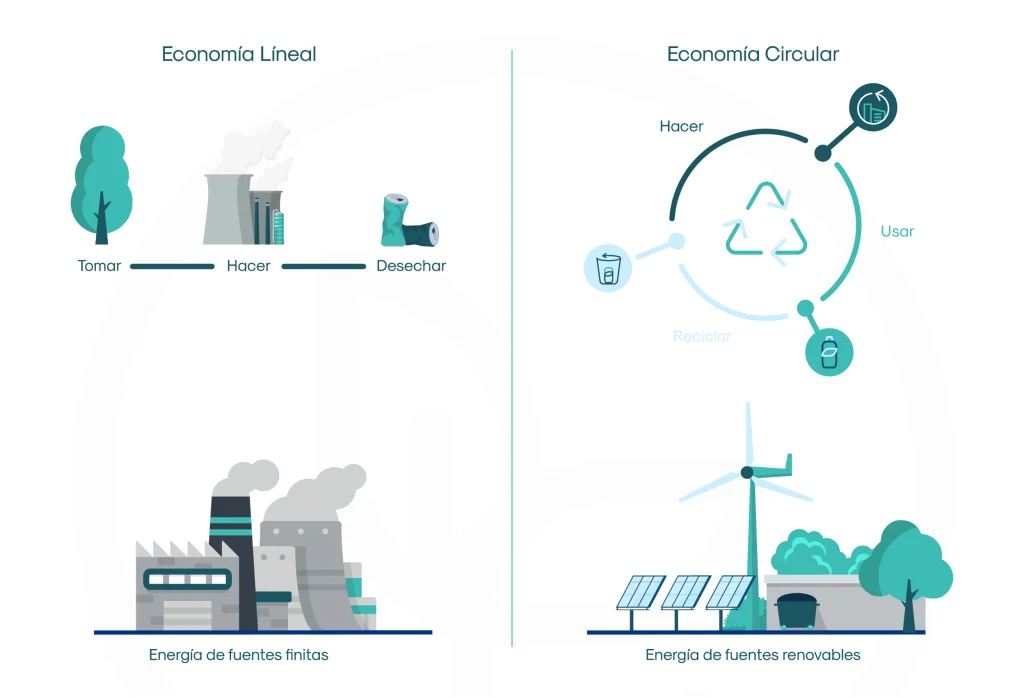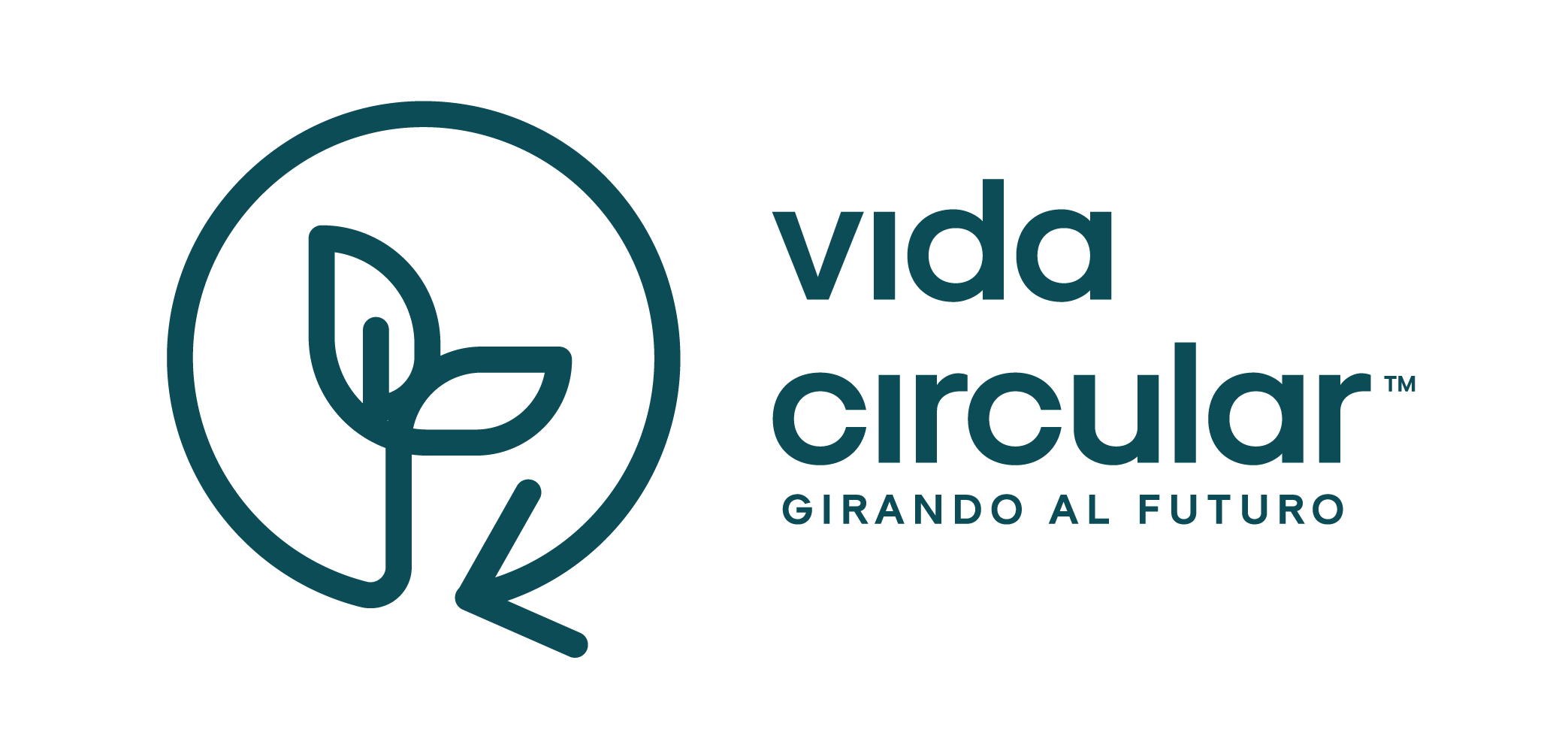
HOW TO LEAVE THE LINEAR ECONOMY BEHIND FOR A CIRCULAR FUTURE
We face a serious problem with the way we consume and throw away, and it's time to do something about it. The linear economy, our current "throwaway" model, is depleting the planet's resources faster than they can regenerate. But there is a viable solution, and it is within our grasp: the circular economy.
This blog will take you through what the linear economy really means, the impact it has on our world and how we can change course. The circular economy is not just a nice idea; it is a practical and necessary path to a sustainable future. I'll show you how you, along with Circular Living, can be part of this essential change.
Understanding the challenge of forgetting linear economics
Linear economics, the system in which we have operated for centuries, follows an "extract, make, dispose" pattern that assumes that resources are infinite and that we can continue to consume without consequence. But is this really the case?
The reality is that our planet has limits. Natural resources that seemed inexhaustible are being depleted at alarming rates. Every product we throw away ends up in landfills or incinerators, contributing to pollution and climate change. This way of consuming not only damages the environment, but also distances us from the possibility of a prosperous future for all.
The impact of linear economics
Resource depletion: The constant extraction of materials reduces biodiversity and unbalances entire ecosystems.
Pollution: The production and disposal of goods generates air, water and soil pollution, affecting our health and that of the planet.
Climate change: The emission of greenhouse gases through the manufacture and disposal of products accelerates climate change.
But this is where our hope and strength come in. Recognizing the problem is the first step to changing it. And that change starts with us, with the decision to look towards a future where the circular economy is not just an idea, but a daily practice.
The circular economy to the rescue
Now that we understand the challenges facing our planet due to the linear economy, it is time to light our way with a brilliant solution: the circular economy. This sustainable model is not only innovative and necessary; it is a call to action for all of us, offering us the opportunity to be part of the solution.
What is the Circular Economy?

The benefits of the circular economy
Resource conservation: Minimizes the extraction of natural resources and reduces pressure on our environment.
Waste reduction: By reusing and recycling, we turn what was once waste into valuable resources, reducing the amount of waste that ends up in landfills.
Innovation and employment: Opens new avenues for innovation and creates employment opportunities in sustainable sectors.
Principles of the circular economy
The transition to the circular economy is more than a change in production and consumption processes; it is a change in mindset. It requires all of us - businesses, governments, communities and individuals - to work together towards a common goal.
At Circular Living, we are committed to leading this change, offering resources, education and support to all who wish to join this movement. Every small step we take in the direction of the circular economy is a leap towards a more sustainable and prosperous future.
1
PRINCIPLE 1
Design
sustainable
Products are designed from the ground up to be repaired, reused and recycled, reducing environmental impact and extending their life cycle.
2
PRINCIPLE 2
Consumption
conscious
It invites us to reflect on our consumption choices, opting for durable products and services that favor reuse and repair.
3
PRINCIPLE 3
Management waste
Transforms waste into resources through composting, recycling and energy reconversion, closing the life cycle of products.
This path to sustainability is full of opportunities to innovate, inspire and make a real difference. By embracing the circular economy, we are not only safeguarding our planet for future generations, we are also creating a more equitable and resilient world for all.
You are part of the solution
The journey towards a more sustainable future is a path we travel together, and every step you take towards the circular economy makes a difference. Here at Circular Living, we firmly believe that collective action begins with individual choices. Your commitment, your actions, and your voice are essential to this movement. Let's see how you can be an active agent of change in this process.
Small changes, big impacts
Sometimes the most significant change begins with the simplest actions. Here are some practical ways you can contribute:
Before you buy, think about the real need for the product and its durability. Opt for products that are designed to have a long shelf life or that can be easily recycled or composted.
This sustainability mantra can be applied to almost every aspect of our lives. From reducing food waste to reusing packaging and recycling correctly, every action counts.
Your purchasing power is a powerful tool. When you choose products or services from companies committed to sustainable practices, you are voting for a greener future.
The change doesn't stop with you; it extends to your community and beyond. Sharing what you learn about the circular economy and how to incorporate sustainable practices into everyday life can inspire others to join this movement.
Use your voice on digital platforms to spread sustainable ideas and actions.
Participating in or organizing workshops on recycling, composting, or conscious consumption can be an effective way to empower others with the knowledge to make positive changes.
Your role in the grand scheme
Every action you take to promote the circular economy makes you a key piece of a much larger puzzle. At Circular Living, we know that true and lasting change is built on everyone's contributions. Together, we are not only redefining our relationship with natural resources, but also weaving a web of solidarity and action toward a sustainable future for all.
Your curiosity, your willingness to learn and your commitment to change are the spark that can light the way for others. You are an essential part of the solution. Together, step by step, we are building the prosperous, circular future we dream of.

Circular Life: Leaders in transformation
At Vida Circular we are working hard to change things towards a more sustainable world. Our goal is clear: we want to make taking care of the planet natural and simple for everyone. We focus on making real, practical changes, collaborating with communities, businesses and people like you who want a better future.
We carry out educational projects on how we can consume smarter and more efficient ways to manage what we throw away, always seeking to make a difference in everyday life. We firmly believe that we all have an important role to play in this effort.
Join this circular movement. There are many ways to participate, learn and help spread the message. At Circular Living, we see great value in working together to make a real and lasting impact. With your support, we can move forward to a future where being sustainable is part of what we do every day.

Conclusion
The evidence is clear and the logic irrefutable: continuing on the path of unbridled consumption and disregard for our natural resources is unsustainable. But in the face of this challenge, the circular economy rises up, not as a utopia, but as a viable and necessary plan of action.
Turning to the future means adopting this circular model in all aspects of our lives. It is about rethinking not only how we consume, but how we live, how we design and how we relate to the environment. The circular economy offers us the roadmap for this change, but the first step begins with each of us.
How do I turn to the future? First, by being conscious of every consumption choice I make, asking myself about the real need behind each purchase and its long-term impact. Second, by spreading the message of the importance of recycling, reusing and reducing, not just in words but through my actions. And third, by supporting companies and organizations that are committed to sustainable practices, because every dollar we spend is a vote for the kind of world we want to live in.
The road to a sustainable future is collective, but it is paved by individual choices. Circular Living shows us that being part of the solution is possible and, in fact, essential. So I invite you to reflect on how you can pivot into the future. Because when we choose to be circular, we are not only choosing for a healthier planet, but also for a fuller and more meaningful life for ourselves and for generations to come.

